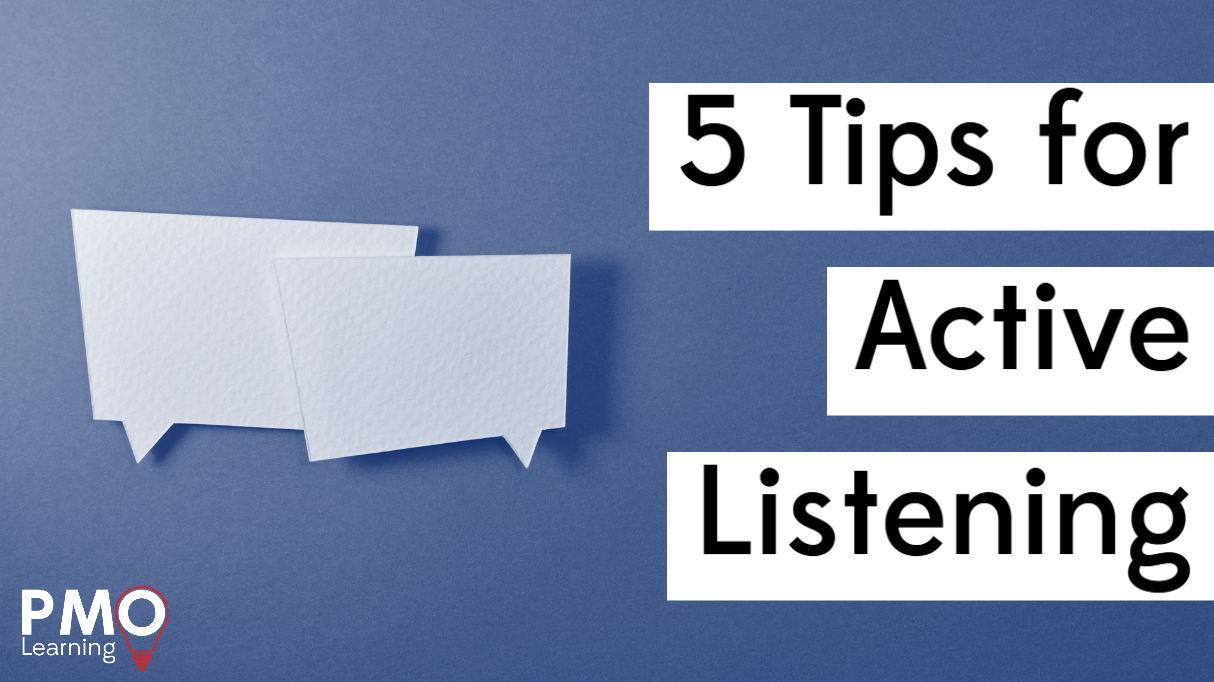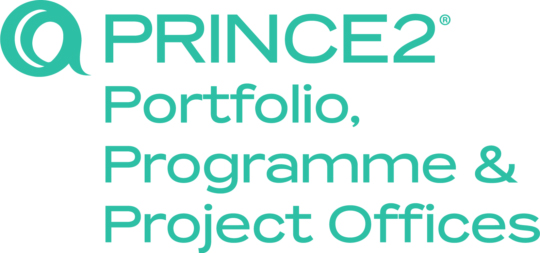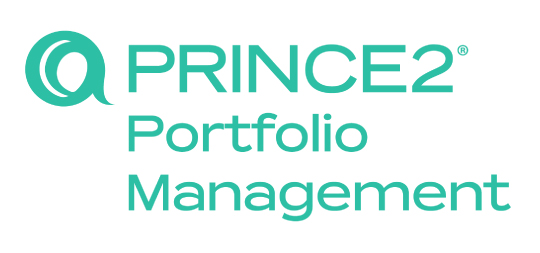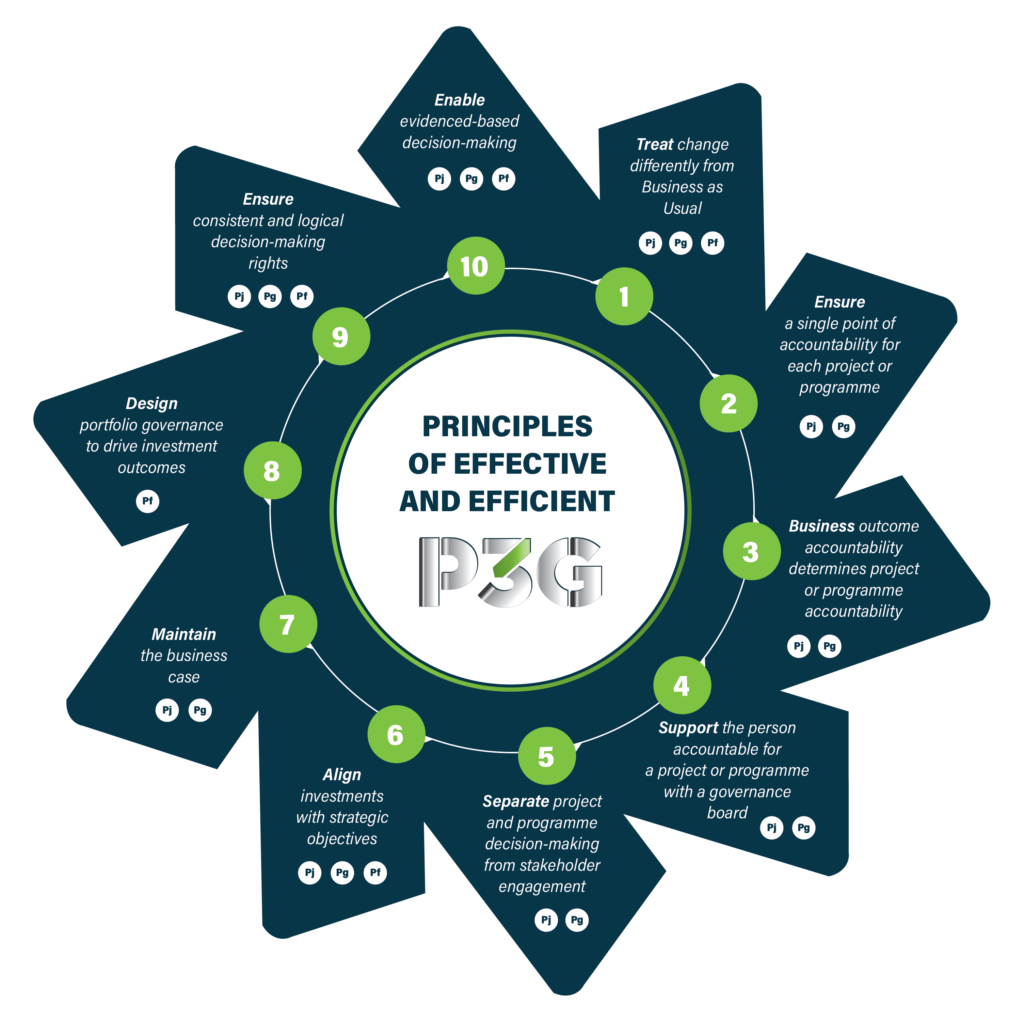We’re still loving the PMO Competency Framework – so over a series of blog posts, we’re going to be taking a more in-depth look at some of the 51 different key skills, and 16 key behaviours outlined in the framework.
Firstly we’re looking at one of the ‘Self’ skills identified – active listening.
The PMO Competency Framework (p.291) describes active listening as,
The ability to listen with all your senses and fully concentrate on what is being said to gain a full understanding of and be able to remember the message, rather than just passively hearing the words of the speaker.
But how can we demonstrate that we are actively listening? How can we improve our active listening skills? Below we’re sharing our 5 best tips for being a great active listener.
1. Maintain eye contact
This is an obvious, but massively important part of active listening.
It can sometimes feel uncomfortable to maintain eye contact with someone, particularly if you don’t know them well.
You don’t need to stare – just a mutual look at each other will reassure the person you are speaking with that you are paying attention, and actively listening to what they are saying.
2. Be neutral and non-judgemental
Often when we’re having a conversation with someone, it can be easy to let our opinion or emotions override the conversation, causing us to butt-in or interrupt our conversation partner. We may also feel tempted to disagree, or even agree, before the other person has finished talking. As a listener, we need to understand what is being said to us, but often our own assumptions or misinterpretations can get in the way of productive conversation.
In order to successfully participate in active listening, we need to allow the other participant to finish each point before we respond with questions or statements.
Even if we disagree with what the other person has said, interrupting with contrasting arguments can be counterproductive and frustrating for both participants – if we are mentally preparing a rebuttal, we are no longer concentrating on what the other person is saying, and as such, are not actively listening.
This however does not mean we should tolerate hateful or offensive speech, or speech that makes us uncomfortable – there is an important distinction between sensitively responding to someone’s approach towards a work issue that you may disagree with (as an example), than tolerating hateful or harmful speech.
3. Provide feedback
Although in Point 2, this doesn’t mean that when we do disagree, or have something to add to the conversation, we shouldn’t contribute.
We can provide feedback verbally, saying “yes”, or “mhm” as someone is speaking, reinforcing their point by summarising what they have said, or respectfully offering your opinion or perspective on the topic at hand.
Whilst verbal cues are certainly useful in demonstrating that you’re actively listening, often the things we don’t say can be more telling to those we are having a conversation with – are we frowning or smiling? Are we facing them, or standing at an angle? Are we nodding to demonstrate our understanding? Are our arms folded?
Non-verbal cues also offer feedback to the person we are having a conversation with, and may encourage them to continue.
4. Ask questions
Sometimes in conversation, we might only think to ask questions when we’re unsure of what someone meant. Whilst this is definitely useful, questions can demonstrate active listening in more ways than simply clarifying a point.
Questions can be useful for…
- To help build a rapport – “How do you feel about that?”
- To stay on topic during a conversation – “How can we link this to the meeting tomorrow morning?”
- To obtain information – “Who are the main stakeholders for this project?”
- To encourage further thought – “Have we considered looking at it in this way?”
Questions are key for active listening, and demonstrates to those involved that we are invested in what is being said.
5. Be patient
Our final tip is key – be patient!
Often when we anticipate, or experience silence as part of a conversation, we rush to fill it – even if what we say doesn’t add any value, or benefit the conversation. More importantly, if all members of the conversation feel the need to fill the silence, participants end up interrupting each other, stunting productive conversation. It is totally acceptable to have quieter moments in conversation where people may reflect on what has been said.
Patience is also important when we disagree or are unsure as to what other speakers have said etc. Instead of diving in to correct someone, or interrupting someone to ask a question, by being patient we may get the answers we’re looking for, or be provided with more information that can shape the questions we need to ask.
Active listening is definitely a skill that needs to regularly be practised, and can definitely be improved. Whilst the tips provided here may seem simple, it is also important to note that mimicking active listening behaviours can be straightfoward, but being proactive in practising these skills is considerably more difficult.
Time, patience and practice are vital in becoming a great active listener.
If you’re looking to learn more about the key skills, behaviours and competencies for those working in a PMO, why not check out the PMO Competency Framework from the House of PMO?
Enjoying Our Blog?
Sign up and receive all our articles (we’ll send you an update once a week!) plus special offers and events:
This post contains affiliate ad links.








